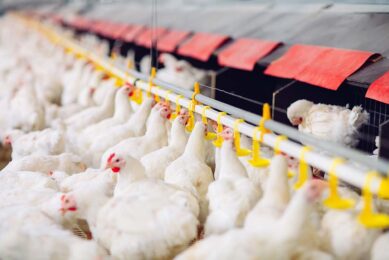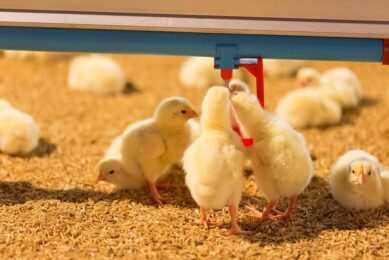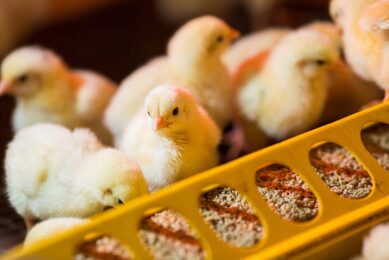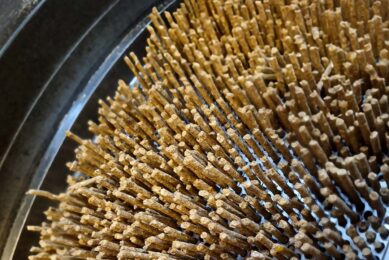Unique saponin-silicate blend promotes resilience
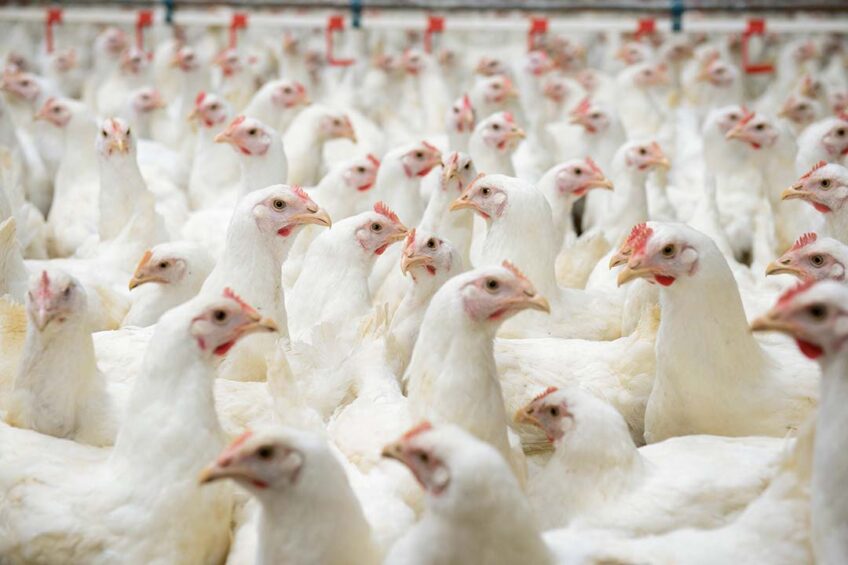
Coccidiosis is a ubiquitous disease in poultry production with a significant economic impact. Conventional methods of control cannot completely eradicate the parasite and subclinical infections still lead to performance losses. Excential Sapphire Q can complement traditional strategies to further mitigate coccidiosis risk in broilers.
Seven different Eimeria species can cause coccidiosis in chicken, each with a different pathogenicity and invading a specific part of the intestinal tract. Invasion of the host cells results in intestinal lesions which impair nutrient digestion and absorption, and ultimately leads to reduced growth and feed efficiency in broilers. The degree and clinical signs of the disease are influenced by the species of Eimeria, the infective dose, site of infection, as well as host- and environmental factors. Infection with a large number of coccidia can result in clinical signs of the disease whereas birds with a mild or subclinical infection are asymptomatic, but performance is impaired. With regards to species, infection with E. acervulina and E. mitis will result in fluid loss and decreased nutrient absorption; E. brunetti and E. maxima cause inflammation of the intestinal wall with pinpoint haemorrhages and sloughing of epithelia; and E. necatrix and E. tenella lead to complete destruction of villi causing haemorrhages and death. Coccidiosis also predisposes the animals to secondary diseases such as necrotic enteritis induced by Clostridium perfringens. The annual global cost of coccidiosis to the industry is estimated at US$13 billion or around US$0.20 per chicken of which the largest part is attributed to the broiler sector.
Traditional methods have drawbacks
Traditional methods to prevent and control coccidiosis are based on the use of live vaccines (virulent or attenuated) and prophylactic anticoccidial drugs. However, these strategies have their drawbacks. The extensive prophylactic use of anticoccidials has led to the development of resistant Eimeria strains and loss of efficacy of these compounds. Vaccines, on the other hand, are expensive and, in broilers, often do not lead to a timely build-up of immunity. Especially live attenuated vaccines that are used in layer and breeder flocks in Europe are not considered cost-effective in intensive broiler production. Although coccidiosis is well-controlled by means of vaccination and anticoccidials, these methods cannot completely eradicate the parasites which remain able to compromise health and performance. Natural feed additives, such as saponin-rich plant extracts and silicates, are among the promising approaches to complement anticoccidials and vaccines to further reduce the negative impact of subclinical coccidiosis in broilers.
Unique saponin-silicate blend
Excential Sapphire Q (Orffa Additives BV) is a blend consisting of Quillaja saponaria extract (with a high concentration of triterpenoid saponins) and an activated aluminosilicate. Saponins are known for their antimicrobial, fungicidal, and insecticidal properties. As a result, saponin extracts from plants such as the Quillaja saponaria Molina tree have a wide range of applications in livestock production and can be used as antibacterial-, antiviral-, and antiparasitic agents, as well as adjuvants. Triterpenoid saponins are well known for their antiprotozoal properties. This is due to the sapogenin part of the saponin molecules which can form complexes with cholesterol in the cell membrane of the parasite. This disruption of the cell membrane prevents parasites such as Eimeria from infecting intestinal cells. Silicates are clay minerals and are widely used as feed additives to support health and performance of animals, mainly due to their ability to adsorb mycotoxins and toxins, thereby protecting the integrity of the intestinal tract. The activated aluminosilicate, included in Excential Sapphire Q, has been shown to bind the alpha- and NetB toxins produced by
C. perfringens. These toxins play critical roles in the development of necrotic enteritis in poultry. Therefore, the functional activity of this unique blend has a broader spectrum towards necrotic enteritis.
Improve broiler performance and reduce oocyst shedding
Recent trials in Europe and the USA have demonstrated the great potential of the unique saponin-silicate blend to improve broiler performance under challenging conditions. In Belgium, an in vivo trial was carried out for 35 days during which broilers were fed a challenging diet, either with or without the addition of the saponin-silicate blend for the whole rearing period. The diets had a high crude protein (CP) content (23%, 21%, and 20% of CP in the starter, grower, and finisher phases, respectively). Furthermore, 5% of rye and 2% of rapeseed meal were added, and no NSP enzymes were supplemented. Both treatment and control diets contained an anticoccidial. Diets high in crude protein and fibre and without the addition of NSP enzymes will decrease the digestibility and utilisation of nutrients. The abundance of nutrients in the intestinal tract provides a favourable environment for the growth and proliferation of pathogens such as Eimeria and C. perfringens. At 35 days of age, the broilers fed the saponin-silicate blend had a 5 point lower FCR (1.38 vs 1.43, P = 0.042) and 3.35% higher body weight (2404.2 g vs 2326.3 g, P = 0.290) compared to the control treatment.
In the USA, the effect of the saponin-silicate blend was studied in broilers exposed to a coccidiosis challenge. The challenge consisted of used litter containing Eimeria oocysts, shed by seeder birds (natural infection model). The seeder birds received a 10x dose of a coccidiosis vaccine via the feed for two days and were raised until 18 days of age to allow for the shedding of oocysts into the litter. After mixing and redistributing the used litter into the trial pens, one-day-old broilers were raised until 42 days of age to evaluate four treatments: a positive control reared on clean litter, with no additives or anticoccidials added to the feed (PC); a negative control reared on used litter, with no additives or anticoccidials added to the feed (NC); a negative control reared on used litter, with an anticoccidial (salinomycin) added to the feed (NC + sal); a negative control reared on used litter, with the saponin-silicate blend added on-top of the feed during the whole rearing period (NC + sap-sil). Oocyst shedding was evaluated over 3 periods. For the period of 22-24 days, oocyst shedding was the lowest in PC and highest in NC, confirming the working of the infection model. Notably, Eimeria oocyst shedding was similar for NC + sal and NC + sap-sil fed birds (P = 0.063) (Figure 1). Furthermore, over a trial period of 42 days, feeding of the saponin-silicate blend improved FCR by 4 points (1.56 vs 1.60, P = 0.053) and broiler growth by 4.4% compared to the NC treatment.
Figure 1 – Oocyst shedding of broilers reared on clean litter (PC), used litter (NC), used litter with the addition of salinomycin to the diet (NC + sal), and used litter with the addition of the saponin-silicate blend on top of the diet (NC + sap-sil).
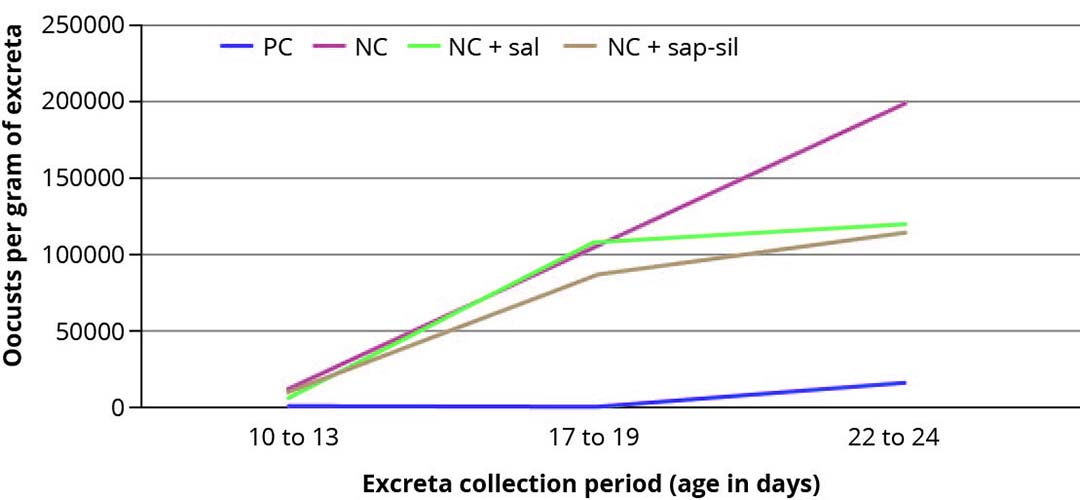
Promote resilience in broilers
These trial results demonstrated that the unique combination of Quillaja saponaria extract (containing a high concentration of triterpenoid saponins) and an activated aluminosilicate reduced coccidiosis pressure and improved performance in broiler chickens. Lower Eimeria pressure as well as improved growth and feed efficiency in broilers will directly translate into higher farm income. Excential Sapphire Q can be applied as an approach to complement present coccidiosis control strategies and to further promote resilience to intestinal infections in broilers.



